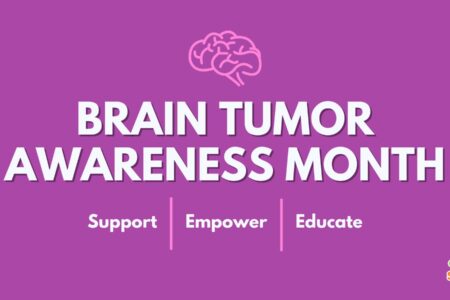
Share On Social!
This Healthy Vision Month in May, the National Eye Institute (NEI) is looking through a futuristic lens to bring awareness to eye health and share English and Spanish-language resources to protect the sight of your familia.
Eye health and mental health go hand in hand, especially for some Latinos who lack access to eye care.
“Reframe Your Future, aims to reach people with a visual impairment about steps they can take to thrive in their daily life, like seeking vision rehabilitation and mental health services,” according to an NEI news release.
Here is what you should know about taking care of eye health for you and your family.
What is Low Vision?
Low vision impairs your ability to see.
It makes it difficult to do day-to-day activities such as reading, driving, or see a screen clearly, and can’t be fixed with glasses, contact lenses, or other treatments like surgery, according to NEI.
There are many types of low vision, including central vision loss (which is not being able to see things in the center of your vision), peripheral vision (which affects the corners of your eyes), or night blindness.
Conditions such as age-related macular degeneration (AMD), cataracts, and glaucoma can be attributed to these impairments and can be brought on by aging, eye and brain injuries, or genetic disorders.
When you visit the eye doctor, request a dilated eye exam to check for low vision.
Vision Rehabilitation
While vision impairment can’t be fixed with glasses, contacts, or surgery, you can take steps to strengthen your eye health.
One such step is seeking rehabilitation services, which can help you with daily activities.
Next time you meet with your eye doctor, speak to them about rehabilitation options, which can include employment and job training, assistive products such as lighting and reading stands, and technology like magnifiers and screen readers.
To explore vision rehabilitation options or find a service provider visit the NEI website.
Latinos and Vision Impairment
According to NEI, Latinos have some of the highest rates of vision loss and blindness due to eye disease and other conditions such as diabetic retinopathy and glaucoma.
In addition, nearly 8 out of 10 Latinos with glaucoma aren’t even aware they have it.
The racial and ethnic disparities in eye health are linked to not receiving regular dilated eye exams.

Receiving regular eye exams begins in childhood.
“Childhood vision screenings may provide early detection of vision disorders and opportunities for subsequent treatment,” according to the Centers for Disease Control and Prevention.
However, many Latino children don’t get their vision tested.
Only 58.6% of Latino children between the ages of 3 and 5 had taken a vision test from 2016 to 2017, according to CDC data.
Differences in socioeconomic status, parental education, and healthcare access play a role in this disparity, especially for Latinos who experience higher rates of poverty.
For instance, children belonging to families with incomes below 200% of the federal poverty line were 10% less likely to have their vision tested.
What’s more, uninsured children were over 40% less likely to have been tested, compared to those with private health insurance.
Explore vision resources for Latinos.
Vision and Mental Health
Taking care of your mental health is a vital aspect of caring for your eye health.
During Healthy Vision Month, NEI is shining a light on how vision impairment can impact your mental health.
“Vision loss can have a major impact on every part of life. Having a visual impairment can create challenges in performing everyday tasks, and the stigma around losing vision can be isolating — causing feelings of fear, anxiety, or grief,” according to the NEI website.
The COVID-19 pandemic shined a light on mental health issues while increasing thoughts of loneliness, especially for older individuals who were isolated during lockdown.
Because many people who experience vision loss are older in age, it’s imperative to address mental health.
That’s why NEI is partnering with the U.S. Surgeon General to bring the 5-for-5 Connection Challenge to “build and strengthen relationships” to the public.
The challenge is simple and made up of three easy steps to get you back on the right path with the people in your life.
- Step 1: Pick 5 actions to connect with people in your life and do them 5 days in a row.
- Step 2: Take those actions, which could be expressing gratitude, offering support, or asking for help.
- Step 3: Reflect on the moments you created with your loved ones. How did those interactions make you feel?
Read more about the challenge and how to participate.
Additional Healthy Vision Resources
There is so much to discover about eye health if you know where to look.
NEI offers many vision resources for you and your family.
Learn about glaucoma, which is more prevalent in Latinos, by exploring the seven vital eye health tips for glaucoma.
NEI also has many amazing resources for kids, such as animated videos, fun graphics, and interactive activities — all designed to promote good vision habits.
“The ¡Ojo con su visión! initiative can help you spread the word about eye health among Hispanics and Latinos in your community,” according to the NEI website. “You can help prevent vision loss and blindness!”
Explore Inequities that Contribute to Poor Eye Health
Where you live, what you eat, and where you play can greatly impact your health.
For instance, living in a neighborhood without access to safe playgrounds or greenspaces to engage in physical activity, or grocery stores with healthier food options, can lead to higher rates of obesity and diabetes.
Diabetes, in turn, can damage your eyes and cause vision loss, according to the CDC.
These conditions can also lead to higher risk of developing chronic diseases such as heart disease, cancer, and Alzheimer’s.
Stay on top of the inequities that affect your community by downloading a Salud America! Health Equity Report Card.
With helpful maps, graphs, and charts, the Health Equity Report Card gives you a sense of where your community stands on issues such as housing, education, transportation, pollution, and more.
Compare the information from the Health Equity Report Card to the rest of the state and country for a better understanding of how your community measures up!
GET YOUR HEALTH EQUITY REPORT CARD!
Explore More:
Healthy Families & SchoolsBy The Numbers
142
Percent
Expected rise in Latino cancer cases in coming years



